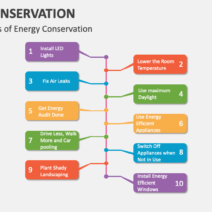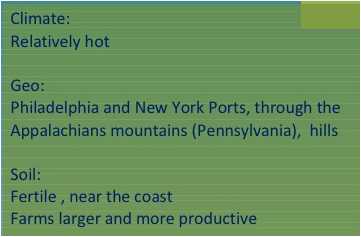The climate of the Middle Colonies, a region that wedged itself between the frigid northern territories and the sultry southern expanses, was akin to a tapestry woven with varying threads. Each component contributed to a unique environment that cultivated a distinctive way of life. This geographic middle ground, encompassing areas that are now Pennsylvania, New Jersey, New York, and Delaware, boasted a climate that was neither too harsh nor too temperate, producing fertile land and a diverse agricultural landscape.
As one traverses through time, examining the climatic conditions of the Middle Colonies in the 17th and 18th centuries, it becomes evident that this region basked in a Mediterranean-like atmosphere during parts of the year, marked by warm summers and cold winters. Seasons danced through the year with a remarkable flair, fostering an environment where crops thrived and communities flourished.
One of the initial aspects to consider is the summer’s embrace. The summers in the Middle Colonies were generally warm, with average temperatures fluctuating around 75°F to 85°F. This warmth invigorated agriculture and allowed for the cultivation of an array of crops, from grains to vegetables. The fertile soil, often referred to as ‘black dirt’ in some regions, was a boon for farmers. It provided a fertile foundation that bore the bounty of wheat, rye, and corn, which became staples in the diets of the colonists. This abundance of agricultural productivity promoted not only community sustenance but also economic trade, as surplus goods were exchanged both locally and abroad.
The growing season, typically extending from late April to early October, was characterized by ample sunshine and moderate rainfall, creating a relaxed yet fruitful rhythm of life. Farmers could plant their crops and anticipate a harvest, driven by nature’s calendar rather than the trepidations of unpredictable weather patterns. This cyclical nature of growth cast the Middle Colonies as the breadbasket of the burgeoning American society, drawing settlers who sought opportunity amidst their idyllic landscape.
In stark contrast, winter descended with a solemn authority. The cold months brought temperatures that could plummet to near freezing, engendering a stark dichotomy to the vibrant summer months. The chilling winds cut through the landscape as frost blanketed the fields, transforming the lively green countryside into a monochromatic canvas of whites and grays. The Middle Colonies experienced snowfalls that were significant but varied in intensity. The robust settlers, however, had long since acclimated to these seasonal transitions, mastering the art of survival through agriculture techniques like crop rotation and storing provisions during harvest.
Life in the Middle Colonies was consequently defined by the rhythm of these seasonal changes. The adaptability of the colonists echoed their understanding of resilience. Community gatherings during harvesting seasons became vibrant social festivals, with the spirit of cooperation manifesting in each shared endeavor. It was in the communal halls where stories of hardship and triumph were exchanged by the crackling light of hearths. The challenging cold demanded ingenuity, compelling the settlers to embrace their environment and innovate. Winter gatherings epitomized this unity as families would come together to survive the freezing months, often sharing resources and knowledge—thus forging strong social ties that would last far beyond any single winter.
Geography also played a pivotal role in shaping the climate. The rolling hills and abundant rivers of the Middle Colonies contributed to a microclimate that set it apart from its northern and southern neighbors. The region’s diverse topography allowed for varying ecological systems, attracting a multitude of fauna and flora. Forests teeming with life bordered the vast farmlands, providing essential resources such as timber for building and firewood for warmth. The rivers, mighty yet gentle, facilitated trade and communication, knitting the communities together across vast distances while fortifying a strong economic infrastructure.
Moreover, the unique climate of the Middle Colonies provided a cultural amalgamation, as different waves of immigrants brought their agricultural practices. The interplay of Dutch, English, Swedes, and other nationalities imbued a rich agricultural tapestry with an array of crops, techniques, and culinary influences that defined life in the region. This blend of cultures created a profound societal fabric, emphasizing cooperation, tolerance, and shared values that would come to shape the identities of the colonists.
It is essential to recognize the profound impact of climate on societal organization. The Middle Colonies, straddling the divide between the industrious North and the plantation-centric South, developed a unique identity characterized by diversity and adaptability. Here, the ethos of community prevailed. Rather than dividing their resources, settlers tended to cultivate a spirit of cooperation, driving collective efforts towards agricultural and economic prosperity.
In summation, the climate of the Middle Colonies served not merely as a backdrop but as an active participant in the cultivation of a vibrant society. It forged not just a physical landscape conducive to agriculture, but also a communal ecosystem that encouraged collaboration, resilience, and cultural integration. The Middle Colonies epitomized the harmony existing between man and nature, showcasing the potential for diverse agricultural practices to foster community and sustain livelihoods amidst the shifting cycles of climate.
Thus, the narrative of the Middle Colonies exemplifies an enduring truth: that the environmental tapestry interwoven with temperature, precipitation, and season is crucial, not merely for sustaining life, but for nurturing the communal spirit that binds humanity to the land. As the modern world grapples with climate change, reflecting on such historical interrelations can illuminate pathways towards sustainability, reminding us of our responsibility to the environments we inhabit.





